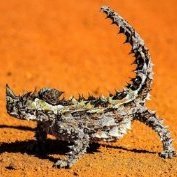-
Posts
4,704 -
Joined
-
Last visited
-
Days Won
15
Reputation Activity
-
 Radub got a reaction from daHeld in Bf 109 Tail plane root
Radub got a reaction from daHeld in Bf 109 Tail plane root
Here are some photos of a Finnish Bf 109: http://www.virtualpilots.fi/en/feature/photoreports/Mersujuhla2003/
Of note are the following photos:
http://www.virtualpilots.fi/en/feature/photoreports/Mersujuhla2003/HPIM1990.JPG
http://www.virtualpilots.fi/en/feature/photoreports/Mersujuhla2003/HPIM1996.JPG
More photos of this aircraft here: https://www.lentoposti.fi/uutiset/juhlavuoden_messerschmitt_nayttely_avautuu
Note this photo:
Here is one photo of another Finnish Bf 109 taken from this link: http://109lair.hobbyvista.com/walkaround/167271/167271.htm
Note the gap:
http://109lair.hobbyvista.com/walkaround/167271/271mo-33.jpg
This one is restored. Note the gap:
http://109lair.hobbyvista.com/walkaround/611943/POF064.jpg
This one was flyable. Note the gap:
http://109lair.hobbyvista.com/walkaround/151591/151591-rudder.left.jpg
Anyway, to make a very long and very boring story even longer and even more boring, as was mentioned elsewhere, the flanges were adjustable, respectively the distance between the flange and the fuselage could be adjusted. So...
Radu
-
 Radub got a reaction from daHeld in Bf 109 Tail plane root
Radub got a reaction from daHeld in Bf 109 Tail plane root
Here is a photo of a flyable Bouchon.
https://www.alamy.com/hispano-ha-1112-buchon-spanish-built-messerschmitt-bf109-me109-german-luftwaffe-fighter-plane-tail-tailplane-and-rudder-space-for-copy-image222388623.html
https://www.alamy.com/stock-photo-british-airways-city-flyer-aircraft-departing-london-city-airport-125873799.html
I am not trying to defend some kind of "huge flange" on any model because I do not know of any model with such huge flanges.
ALL I am saying is that on a model the flange MUST be represented as an item standing out from the vertical surface of the fin/fuselage. A flange standing out at 0.25 to 0.3 mm in scale 1/32 is sufficient. That is NOT enormous. Take a metric ruler, look at a millimetre, now picture a fraction of it.
LET us not 'throw the baby with the bathwater." There are people who have an unhealthy obsession with destroying models. I am trying to create here, not destroy.
Radu
-
 Radub got a reaction from Uncarina in Bf 109 Tail plane root
Radub got a reaction from Uncarina in Bf 109 Tail plane root
Here are some photos of a Finnish Bf 109: http://www.virtualpilots.fi/en/feature/photoreports/Mersujuhla2003/
Of note are the following photos:
http://www.virtualpilots.fi/en/feature/photoreports/Mersujuhla2003/HPIM1990.JPG
http://www.virtualpilots.fi/en/feature/photoreports/Mersujuhla2003/HPIM1996.JPG
More photos of this aircraft here: https://www.lentoposti.fi/uutiset/juhlavuoden_messerschmitt_nayttely_avautuu
Note this photo:
Here is one photo of another Finnish Bf 109 taken from this link: http://109lair.hobbyvista.com/walkaround/167271/167271.htm
Note the gap:
http://109lair.hobbyvista.com/walkaround/167271/271mo-33.jpg
This one is restored. Note the gap:
http://109lair.hobbyvista.com/walkaround/611943/POF064.jpg
This one was flyable. Note the gap:
http://109lair.hobbyvista.com/walkaround/151591/151591-rudder.left.jpg
Anyway, to make a very long and very boring story even longer and even more boring, as was mentioned elsewhere, the flanges were adjustable, respectively the distance between the flange and the fuselage could be adjusted. So...
Radu
-
 Radub got a reaction from TAG in Bf 109 Tail plane root
Radub got a reaction from TAG in Bf 109 Tail plane root
Here are some photos of a Finnish Bf 109: http://www.virtualpilots.fi/en/feature/photoreports/Mersujuhla2003/
Of note are the following photos:
http://www.virtualpilots.fi/en/feature/photoreports/Mersujuhla2003/HPIM1990.JPG
http://www.virtualpilots.fi/en/feature/photoreports/Mersujuhla2003/HPIM1996.JPG
More photos of this aircraft here: https://www.lentoposti.fi/uutiset/juhlavuoden_messerschmitt_nayttely_avautuu
Note this photo:
Here is one photo of another Finnish Bf 109 taken from this link: http://109lair.hobbyvista.com/walkaround/167271/167271.htm
Note the gap:
http://109lair.hobbyvista.com/walkaround/167271/271mo-33.jpg
This one is restored. Note the gap:
http://109lair.hobbyvista.com/walkaround/611943/POF064.jpg
This one was flyable. Note the gap:
http://109lair.hobbyvista.com/walkaround/151591/151591-rudder.left.jpg
Anyway, to make a very long and very boring story even longer and even more boring, as was mentioned elsewhere, the flanges were adjustable, respectively the distance between the flange and the fuselage could be adjusted. So...
Radu
-
 Radub got a reaction from IainM in Bf 109 Tail plane root
Radub got a reaction from IainM in Bf 109 Tail plane root
Here is a photo of a flyable Bouchon.
https://www.alamy.com/hispano-ha-1112-buchon-spanish-built-messerschmitt-bf109-me109-german-luftwaffe-fighter-plane-tail-tailplane-and-rudder-space-for-copy-image222388623.html
https://www.alamy.com/stock-photo-british-airways-city-flyer-aircraft-departing-london-city-airport-125873799.html
I am not trying to defend some kind of "huge flange" on any model because I do not know of any model with such huge flanges.
ALL I am saying is that on a model the flange MUST be represented as an item standing out from the vertical surface of the fin/fuselage. A flange standing out at 0.25 to 0.3 mm in scale 1/32 is sufficient. That is NOT enormous. Take a metric ruler, look at a millimetre, now picture a fraction of it.
LET us not 'throw the baby with the bathwater." There are people who have an unhealthy obsession with destroying models. I am trying to create here, not destroy.
Radu
-
 Radub got a reaction from TAG in Bf 109 Tail plane root
Radub got a reaction from TAG in Bf 109 Tail plane root
Here is a photo of a flyable Bouchon.
https://www.alamy.com/hispano-ha-1112-buchon-spanish-built-messerschmitt-bf109-me109-german-luftwaffe-fighter-plane-tail-tailplane-and-rudder-space-for-copy-image222388623.html
https://www.alamy.com/stock-photo-british-airways-city-flyer-aircraft-departing-london-city-airport-125873799.html
I am not trying to defend some kind of "huge flange" on any model because I do not know of any model with such huge flanges.
ALL I am saying is that on a model the flange MUST be represented as an item standing out from the vertical surface of the fin/fuselage. A flange standing out at 0.25 to 0.3 mm in scale 1/32 is sufficient. That is NOT enormous. Take a metric ruler, look at a millimetre, now picture a fraction of it.
LET us not 'throw the baby with the bathwater." There are people who have an unhealthy obsession with destroying models. I am trying to create here, not destroy.
Radu
-
 Radub got a reaction from Martinnfb in Bf 109 Tail plane root
Radub got a reaction from Martinnfb in Bf 109 Tail plane root
Here is a photo of a flyable Bouchon.
https://www.alamy.com/hispano-ha-1112-buchon-spanish-built-messerschmitt-bf109-me109-german-luftwaffe-fighter-plane-tail-tailplane-and-rudder-space-for-copy-image222388623.html
https://www.alamy.com/stock-photo-british-airways-city-flyer-aircraft-departing-london-city-airport-125873799.html
I am not trying to defend some kind of "huge flange" on any model because I do not know of any model with such huge flanges.
ALL I am saying is that on a model the flange MUST be represented as an item standing out from the vertical surface of the fin/fuselage. A flange standing out at 0.25 to 0.3 mm in scale 1/32 is sufficient. That is NOT enormous. Take a metric ruler, look at a millimetre, now picture a fraction of it.
LET us not 'throw the baby with the bathwater." There are people who have an unhealthy obsession with destroying models. I am trying to create here, not destroy.
Radu
-
 Radub got a reaction from Fanes in Bf 109 Tail plane root
Radub got a reaction from Fanes in Bf 109 Tail plane root
Here is a photo of a flyable Bouchon.
https://www.alamy.com/hispano-ha-1112-buchon-spanish-built-messerschmitt-bf109-me109-german-luftwaffe-fighter-plane-tail-tailplane-and-rudder-space-for-copy-image222388623.html
https://www.alamy.com/stock-photo-british-airways-city-flyer-aircraft-departing-london-city-airport-125873799.html
I am not trying to defend some kind of "huge flange" on any model because I do not know of any model with such huge flanges.
ALL I am saying is that on a model the flange MUST be represented as an item standing out from the vertical surface of the fin/fuselage. A flange standing out at 0.25 to 0.3 mm in scale 1/32 is sufficient. That is NOT enormous. Take a metric ruler, look at a millimetre, now picture a fraction of it.
LET us not 'throw the baby with the bathwater." There are people who have an unhealthy obsession with destroying models. I am trying to create here, not destroy.
Radu
-
 Radub got a reaction from daHeld in Bf 109 Tail plane root
Radub got a reaction from daHeld in Bf 109 Tail plane root
I see that on another forum there is a discussion about the photos I posted above. The usual arguments were thrown in, such as "bad restoration" and "a groundgcrew will never allow..." in order to dismiss the photos of "Black 6" as invalid arguments. That discussion contains many photos of wartime aircraft that shows that the flanges were "snug" and that there is no way there is any "gap" between the flange and the fuselage. But... The fact is that the gap between the flange and the fuselge IS NOT a huge chasm. As I mentioned above, it varies between 7 mm and 10 mm. That IS NOT a huge gap. Take a metric ruler. Look at what 7 mm and 10 mm looks like. From a distance, that is almost unnoticeable. Those wartime photos only serve to prove that the space between flange and fin/fuselage will not show in photos taken from a distance. Here are two photos of the same subject taken from up-close and from a distance.
And for comparison purposes here is a photo from the front. Compare to the photo from the first post.
As you can see, you do not need to step that far back for that gap between the flange and the fin/fuselage to almost disappear. But the gap is there. It has to be there otherwise the flange would rub against the fin/fuselage causing some kind of marks on the fuselage. Why do such rub marks and scratches never show up in wartime photos? Because the parts did not touch.
In scale 1/32, a flange standing our by about 0.25 to 0.35 mm from the surface should be enough to simulate this.
HTH
Radu
-
 Radub got a reaction from LSP_Matt in Bf 109 Tail plane root
Radub got a reaction from LSP_Matt in Bf 109 Tail plane root
I see that on another forum there is a discussion about the photos I posted above. The usual arguments were thrown in, such as "bad restoration" and "a groundgcrew will never allow..." in order to dismiss the photos of "Black 6" as invalid arguments. That discussion contains many photos of wartime aircraft that shows that the flanges were "snug" and that there is no way there is any "gap" between the flange and the fuselage. But... The fact is that the gap between the flange and the fuselge IS NOT a huge chasm. As I mentioned above, it varies between 7 mm and 10 mm. That IS NOT a huge gap. Take a metric ruler. Look at what 7 mm and 10 mm looks like. From a distance, that is almost unnoticeable. Those wartime photos only serve to prove that the space between flange and fin/fuselage will not show in photos taken from a distance. Here are two photos of the same subject taken from up-close and from a distance.
And for comparison purposes here is a photo from the front. Compare to the photo from the first post.
As you can see, you do not need to step that far back for that gap between the flange and the fin/fuselage to almost disappear. But the gap is there. It has to be there otherwise the flange would rub against the fin/fuselage causing some kind of marks on the fuselage. Why do such rub marks and scratches never show up in wartime photos? Because the parts did not touch.
In scale 1/32, a flange standing our by about 0.25 to 0.35 mm from the surface should be enough to simulate this.
HTH
Radu
-
 Radub got a reaction from LSP_K2 in Bf 109 Tail plane root
Radub got a reaction from LSP_K2 in Bf 109 Tail plane root
I see that on another forum there is a discussion about the photos I posted above. The usual arguments were thrown in, such as "bad restoration" and "a groundgcrew will never allow..." in order to dismiss the photos of "Black 6" as invalid arguments. That discussion contains many photos of wartime aircraft that shows that the flanges were "snug" and that there is no way there is any "gap" between the flange and the fuselage. But... The fact is that the gap between the flange and the fuselge IS NOT a huge chasm. As I mentioned above, it varies between 7 mm and 10 mm. That IS NOT a huge gap. Take a metric ruler. Look at what 7 mm and 10 mm looks like. From a distance, that is almost unnoticeable. Those wartime photos only serve to prove that the space between flange and fin/fuselage will not show in photos taken from a distance. Here are two photos of the same subject taken from up-close and from a distance.
And for comparison purposes here is a photo from the front. Compare to the photo from the first post.
As you can see, you do not need to step that far back for that gap between the flange and the fin/fuselage to almost disappear. But the gap is there. It has to be there otherwise the flange would rub against the fin/fuselage causing some kind of marks on the fuselage. Why do such rub marks and scratches never show up in wartime photos? Because the parts did not touch.
In scale 1/32, a flange standing our by about 0.25 to 0.35 mm from the surface should be enough to simulate this.
HTH
Radu
-
 Radub got a reaction from Uncarina in Bf 109 Tail plane root
Radub got a reaction from Uncarina in Bf 109 Tail plane root
I see that on another forum there is a discussion about the photos I posted above. The usual arguments were thrown in, such as "bad restoration" and "a groundgcrew will never allow..." in order to dismiss the photos of "Black 6" as invalid arguments. That discussion contains many photos of wartime aircraft that shows that the flanges were "snug" and that there is no way there is any "gap" between the flange and the fuselage. But... The fact is that the gap between the flange and the fuselge IS NOT a huge chasm. As I mentioned above, it varies between 7 mm and 10 mm. That IS NOT a huge gap. Take a metric ruler. Look at what 7 mm and 10 mm looks like. From a distance, that is almost unnoticeable. Those wartime photos only serve to prove that the space between flange and fin/fuselage will not show in photos taken from a distance. Here are two photos of the same subject taken from up-close and from a distance.
And for comparison purposes here is a photo from the front. Compare to the photo from the first post.
As you can see, you do not need to step that far back for that gap between the flange and the fin/fuselage to almost disappear. But the gap is there. It has to be there otherwise the flange would rub against the fin/fuselage causing some kind of marks on the fuselage. Why do such rub marks and scratches never show up in wartime photos? Because the parts did not touch.
In scale 1/32, a flange standing our by about 0.25 to 0.35 mm from the surface should be enough to simulate this.
HTH
Radu
-
 Radub got a reaction from TAG in Bf 109 Tail plane root
Radub got a reaction from TAG in Bf 109 Tail plane root
I see that on another forum there is a discussion about the photos I posted above. The usual arguments were thrown in, such as "bad restoration" and "a groundgcrew will never allow..." in order to dismiss the photos of "Black 6" as invalid arguments. That discussion contains many photos of wartime aircraft that shows that the flanges were "snug" and that there is no way there is any "gap" between the flange and the fuselage. But... The fact is that the gap between the flange and the fuselge IS NOT a huge chasm. As I mentioned above, it varies between 7 mm and 10 mm. That IS NOT a huge gap. Take a metric ruler. Look at what 7 mm and 10 mm looks like. From a distance, that is almost unnoticeable. Those wartime photos only serve to prove that the space between flange and fin/fuselage will not show in photos taken from a distance. Here are two photos of the same subject taken from up-close and from a distance.
And for comparison purposes here is a photo from the front. Compare to the photo from the first post.
As you can see, you do not need to step that far back for that gap between the flange and the fin/fuselage to almost disappear. But the gap is there. It has to be there otherwise the flange would rub against the fin/fuselage causing some kind of marks on the fuselage. Why do such rub marks and scratches never show up in wartime photos? Because the parts did not touch.
In scale 1/32, a flange standing our by about 0.25 to 0.35 mm from the surface should be enough to simulate this.
HTH
Radu
-
 Radub got a reaction from Rockie Yarwood in Bf 109 Tail plane root
Radub got a reaction from Rockie Yarwood in Bf 109 Tail plane root
I see that on another forum there is a discussion about the photos I posted above. The usual arguments were thrown in, such as "bad restoration" and "a groundgcrew will never allow..." in order to dismiss the photos of "Black 6" as invalid arguments. That discussion contains many photos of wartime aircraft that shows that the flanges were "snug" and that there is no way there is any "gap" between the flange and the fuselage. But... The fact is that the gap between the flange and the fuselge IS NOT a huge chasm. As I mentioned above, it varies between 7 mm and 10 mm. That IS NOT a huge gap. Take a metric ruler. Look at what 7 mm and 10 mm looks like. From a distance, that is almost unnoticeable. Those wartime photos only serve to prove that the space between flange and fin/fuselage will not show in photos taken from a distance. Here are two photos of the same subject taken from up-close and from a distance.
And for comparison purposes here is a photo from the front. Compare to the photo from the first post.
As you can see, you do not need to step that far back for that gap between the flange and the fin/fuselage to almost disappear. But the gap is there. It has to be there otherwise the flange would rub against the fin/fuselage causing some kind of marks on the fuselage. Why do such rub marks and scratches never show up in wartime photos? Because the parts did not touch.
In scale 1/32, a flange standing our by about 0.25 to 0.35 mm from the surface should be enough to simulate this.
HTH
Radu
-
 Radub got a reaction from MikeC in Bf 109 Tail plane root
Radub got a reaction from MikeC in Bf 109 Tail plane root
I see that on another forum there is a discussion about the photos I posted above. The usual arguments were thrown in, such as "bad restoration" and "a groundgcrew will never allow..." in order to dismiss the photos of "Black 6" as invalid arguments. That discussion contains many photos of wartime aircraft that shows that the flanges were "snug" and that there is no way there is any "gap" between the flange and the fuselage. But... The fact is that the gap between the flange and the fuselge IS NOT a huge chasm. As I mentioned above, it varies between 7 mm and 10 mm. That IS NOT a huge gap. Take a metric ruler. Look at what 7 mm and 10 mm looks like. From a distance, that is almost unnoticeable. Those wartime photos only serve to prove that the space between flange and fin/fuselage will not show in photos taken from a distance. Here are two photos of the same subject taken from up-close and from a distance.
And for comparison purposes here is a photo from the front. Compare to the photo from the first post.
As you can see, you do not need to step that far back for that gap between the flange and the fin/fuselage to almost disappear. But the gap is there. It has to be there otherwise the flange would rub against the fin/fuselage causing some kind of marks on the fuselage. Why do such rub marks and scratches never show up in wartime photos? Because the parts did not touch.
In scale 1/32, a flange standing our by about 0.25 to 0.35 mm from the surface should be enough to simulate this.
HTH
Radu
-
 Radub reacted to Juggernut in Bf 109 Tail plane root
Radub reacted to Juggernut in Bf 109 Tail plane root
Oh yeah, in 1/32, a 7-10mm gap is only 0.009 inches - 0.012 inches (for those of us using English units); three to four sheets of writing paper thickness (@ 0.003 inches per sheet). I've seen panel lines on kits that were just as big (and some bigger!). I'll also add that this is information I never knew so thanks Radu, most appreciated.
-
 Radub got a reaction from chrish in Bf 109 Tail plane root
Radub got a reaction from chrish in Bf 109 Tail plane root
I see that on another forum there is a discussion about the photos I posted above. The usual arguments were thrown in, such as "bad restoration" and "a groundgcrew will never allow..." in order to dismiss the photos of "Black 6" as invalid arguments. That discussion contains many photos of wartime aircraft that shows that the flanges were "snug" and that there is no way there is any "gap" between the flange and the fuselage. But... The fact is that the gap between the flange and the fuselge IS NOT a huge chasm. As I mentioned above, it varies between 7 mm and 10 mm. That IS NOT a huge gap. Take a metric ruler. Look at what 7 mm and 10 mm looks like. From a distance, that is almost unnoticeable. Those wartime photos only serve to prove that the space between flange and fin/fuselage will not show in photos taken from a distance. Here are two photos of the same subject taken from up-close and from a distance.
And for comparison purposes here is a photo from the front. Compare to the photo from the first post.
As you can see, you do not need to step that far back for that gap between the flange and the fin/fuselage to almost disappear. But the gap is there. It has to be there otherwise the flange would rub against the fin/fuselage causing some kind of marks on the fuselage. Why do such rub marks and scratches never show up in wartime photos? Because the parts did not touch.
In scale 1/32, a flange standing our by about 0.25 to 0.35 mm from the surface should be enough to simulate this.
HTH
Radu
-
 Radub got a reaction from RBrown in Bf 109 Tail plane root
Radub got a reaction from RBrown in Bf 109 Tail plane root
I see that on another forum there is a discussion about the photos I posted above. The usual arguments were thrown in, such as "bad restoration" and "a groundgcrew will never allow..." in order to dismiss the photos of "Black 6" as invalid arguments. That discussion contains many photos of wartime aircraft that shows that the flanges were "snug" and that there is no way there is any "gap" between the flange and the fuselage. But... The fact is that the gap between the flange and the fuselge IS NOT a huge chasm. As I mentioned above, it varies between 7 mm and 10 mm. That IS NOT a huge gap. Take a metric ruler. Look at what 7 mm and 10 mm looks like. From a distance, that is almost unnoticeable. Those wartime photos only serve to prove that the space between flange and fin/fuselage will not show in photos taken from a distance. Here are two photos of the same subject taken from up-close and from a distance.
And for comparison purposes here is a photo from the front. Compare to the photo from the first post.
As you can see, you do not need to step that far back for that gap between the flange and the fin/fuselage to almost disappear. But the gap is there. It has to be there otherwise the flange would rub against the fin/fuselage causing some kind of marks on the fuselage. Why do such rub marks and scratches never show up in wartime photos? Because the parts did not touch.
In scale 1/32, a flange standing our by about 0.25 to 0.35 mm from the surface should be enough to simulate this.
HTH
Radu
-
 Radub got a reaction from Fanes in Bf 109 Tail plane root
Radub got a reaction from Fanes in Bf 109 Tail plane root
I see that on another forum there is a discussion about the photos I posted above. The usual arguments were thrown in, such as "bad restoration" and "a groundgcrew will never allow..." in order to dismiss the photos of "Black 6" as invalid arguments. That discussion contains many photos of wartime aircraft that shows that the flanges were "snug" and that there is no way there is any "gap" between the flange and the fuselage. But... The fact is that the gap between the flange and the fuselge IS NOT a huge chasm. As I mentioned above, it varies between 7 mm and 10 mm. That IS NOT a huge gap. Take a metric ruler. Look at what 7 mm and 10 mm looks like. From a distance, that is almost unnoticeable. Those wartime photos only serve to prove that the space between flange and fin/fuselage will not show in photos taken from a distance. Here are two photos of the same subject taken from up-close and from a distance.
And for comparison purposes here is a photo from the front. Compare to the photo from the first post.
As you can see, you do not need to step that far back for that gap between the flange and the fin/fuselage to almost disappear. But the gap is there. It has to be there otherwise the flange would rub against the fin/fuselage causing some kind of marks on the fuselage. Why do such rub marks and scratches never show up in wartime photos? Because the parts did not touch.
In scale 1/32, a flange standing our by about 0.25 to 0.35 mm from the surface should be enough to simulate this.
HTH
Radu
-
 Radub got a reaction from daHeld in Bf 109 Tail plane root
Radub got a reaction from daHeld in Bf 109 Tail plane root
The only possible way to replicate the position of the flange in relation to the fuselage is to represent it as a raised item, standing "proud" from the surface. Such a flange standing proud from the fuselage on a model is not a fault, it is intentional.
Another deep misunderstanding about the tail of the Bf 109 is about the "asymetry". The fin is asymetrical but the rudder is asymetrical too. The asymetry of the rudder was completely ignored in many models and scale drawings. Such an asymetrical rudder on a model is not a fault, it is intentional.
Have a look at this photo. The rudder is in the "neutral" position, before I took this photo I engaged the lock that secures the rudder pedals and the control stick. Look also at the position of the counterweight at the top of the rudder in relation to the fin and you can see that the rudder is in the "neutral" position. However, despite the "neutral" position the rudder is noticeably canted to the right. That is because the asymetrical aspect of the tail encompasses both the fin and the rudder.
I must repeat that any model or scale drawing containing these features is not "faulty".
HTH
Radu
-
 Radub got a reaction from Rick Griewski in 1/32 Border Lancaster Nose
Radub got a reaction from Rick Griewski in 1/32 Border Lancaster Nose
Lancaster flying in day time with American pilots and escorted by P-40's? Cue outrage from the "experts" in three, two, one, go! Note that this is by the same Jason Wong who created the box art with the PLA tanks in San Francisco or Jersey City. They are doing it on purpose to drive traffic and comments. Trolling for viral content. Don't take the bait, keep moving.
Radu
-
 Radub got a reaction from Darren Howie in 1/32 Border Lancaster Nose
Radub got a reaction from Darren Howie in 1/32 Border Lancaster Nose
Lancaster flying in day time with American pilots and escorted by P-40's? Cue outrage from the "experts" in three, two, one, go! Note that this is by the same Jason Wong who created the box art with the PLA tanks in San Francisco or Jersey City. They are doing it on purpose to drive traffic and comments. Trolling for viral content. Don't take the bait, keep moving.
Radu
-
 Radub got a reaction from IainM in Bf 109 Tail plane root
Radub got a reaction from IainM in Bf 109 Tail plane root
The only possible way to replicate the position of the flange in relation to the fuselage is to represent it as a raised item, standing "proud" from the surface. Such a flange standing proud from the fuselage on a model is not a fault, it is intentional.
Another deep misunderstanding about the tail of the Bf 109 is about the "asymetry". The fin is asymetrical but the rudder is asymetrical too. The asymetry of the rudder was completely ignored in many models and scale drawings. Such an asymetrical rudder on a model is not a fault, it is intentional.
Have a look at this photo. The rudder is in the "neutral" position, before I took this photo I engaged the lock that secures the rudder pedals and the control stick. Look also at the position of the counterweight at the top of the rudder in relation to the fin and you can see that the rudder is in the "neutral" position. However, despite the "neutral" position the rudder is noticeably canted to the right. That is because the asymetrical aspect of the tail encompasses both the fin and the rudder.
I must repeat that any model or scale drawing containing these features is not "faulty".
HTH
Radu
-
 Radub got a reaction from daHeld in Bf 109 Tail plane root
Radub got a reaction from daHeld in Bf 109 Tail plane root
That is correct. The aircraft needed to be trimmed as the ammunition and fuel was expended and the centre of gravity shifted slightly.
The fact that the flange was at a distance from the fuselage was missed on many models in the past. Some models actually represent the edge of that flange as an engraved line on the fuselage. In reality the flange was at some distance from the fuselage.
HTH
Radu
-
 Radub got a reaction from Phartycr0c in 1/32 Border Lancaster Nose
Radub got a reaction from Phartycr0c in 1/32 Border Lancaster Nose
Lancaster flying in day time with American pilots and escorted by P-40's? Cue outrage from the "experts" in three, two, one, go! Note that this is by the same Jason Wong who created the box art with the PLA tanks in San Francisco or Jersey City. They are doing it on purpose to drive traffic and comments. Trolling for viral content. Don't take the bait, keep moving.
Radu












